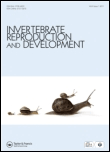
INVERTEBRATE REPRODUCTION & DEVELOPMENT
Scope & Guideline
Innovating Insights into Animal Science and Zoology.
Introduction
Aims and Scopes
- Reproductive Biology of Invertebrates:
The journal publishes studies on various aspects of reproductive biology, including gametogenesis, reproductive strategies, sexual dimorphism, and mating systems across different invertebrate taxa. - Developmental Processes:
Research on embryonic and larval development, including morphogenetic processes and factors affecting development, is a core focus, contributing to a deeper understanding of invertebrate life stages. - Environmental and Ecological Influences:
The journal emphasizes the impact of environmental factors such as temperature, pollutants, and habitat on reproduction and development, reflecting the ecological context in which these organisms exist. - Comparative and Evolutionary Perspectives:
Studies that compare reproductive and developmental traits across taxa or investigate evolutionary adaptations related to reproduction are encouraged, adding to the evolutionary discourse in invertebrate biology. - Applied Research for Conservation and Management:
Research with implications for conservation, fisheries management, and aquaculture is highlighted, aiming to apply scientific findings to real-world challenges affecting invertebrate populations.
Trending and Emerging
- Impact of Climate Change on Reproduction:
There is an increasing number of studies investigating how climate change, particularly temperature fluctuations, affects reproductive success and developmental processes in invertebrates, highlighting the urgency of understanding these impacts. - Integration of Molecular Techniques:
Emerging themes include the application of molecular biology techniques to study reproductive mechanisms at the genetic and biochemical levels, providing deeper insights into reproductive strategies and adaptations. - Ecological Interaction Studies:
Research exploring the interactions between invertebrate reproduction and ecological factors, such as predator-prey dynamics and habitat modifications, is on the rise, indicating a holistic approach to understanding reproductive success. - Use of Medicinal and Natural Products:
There is a notable increase in studies examining the effects of natural and medicinal products on reproduction and development, which could have implications for aquaculture and pest management. - Sustainable Practices in Invertebrate Management:
Emerging research is focusing on sustainable practices for managing invertebrate populations, particularly in the contexts of fisheries and aquaculture, reflecting a growing awareness of environmental stewardship.
Declining or Waning
- Laboratory-based Reproductive Studies:
There seems to be a decreasing focus on laboratory studies that isolate variables in controlled settings, as researchers increasingly seek to understand in situ conditions and ecological relevance. - Morphological Studies of Reproductive Structures:
Research primarily focused on detailed morphological analyses of reproductive organs and structures is less frequently published, indicating a potential shift towards functional and ecological studies. - Traditional Toxicological Assessments:
Studies centered solely on the toxicological impacts of pollutants without considering ecological or environmental interactions are published less frequently, suggesting a move towards more integrative approaches. - Historical Reviews on Invertebrate Reproduction:
The publication of comprehensive historical reviews on invertebrate reproduction has decreased, possibly due to a preference for original research that contributes new findings to the field.
Similar Journals

JOURNAL OF MOLECULAR ENDOCRINOLOGY
Illuminating the Complexities of Hormonal InteractionsJOURNAL OF MOLECULAR ENDOCRINOLOGY, published by BIOSCIENTIFICA LTD, is a prestigious academic journal that has made significant contributions to the fields of endocrinology and molecular biology since its inception in 1988. With an impressive impact factor that places it in the Q1 category for Endocrinology and Q2 for Molecular Biology, this journal is recognized for its rigorous peer-reviewed research that addresses key questions at the intersection of molecular mechanisms and hormonal regulation. The journal's accessibility within the Scopus rankings, notably positioned 45th out of 128 in Endocrinology, highlights its relevance and influence in shaping contemporary scientific discourse. Although the journal does not currently offer open access options, it remains an essential resource for researchers, professionals, and students eager to explore groundbreaking discoveries and advancements in the hormonal sciences. The JOURNAL OF MOLECULAR ENDOCRINOLOGY continues to pave the way for critical exploration and innovation, ensuring its place as a vital publication for the advancement of knowledge in molecular endocrinology.
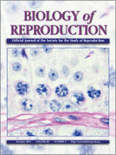
BIOLOGY OF REPRODUCTION
Advancing the Frontiers of Reproductive ScienceBIOLOGY OF REPRODUCTION is a premier journal published by Oxford University Press Inc, dedicated to advancing research in the fields of reproductive biology, cell biology, and reproductive medicine. With an impressive impact factor and a strong ranking as Q1 in reproductive medicine and miscellaneous medicine, as well as Q2 in cell biology, this journal offers a vital platform for disseminating innovative findings and pivotal studies that shape our understanding of reproductive processes. Since its inception in 1969, BIOLOGY OF REPRODUCTION has become a key resource for scientists, clinicians, and students alike, providing insights that drive the future of reproductive health and research. Although not an open-access publication, it remains a respected authority, reflecting a commitment to high-quality peer-reviewed articles. The journal's comprehensive scope includes molecular and cellular aspects of reproduction, reproductive health, and associated technologies, making it indispensable for professionals looking to stay at the forefront of breakthroughs within the field.

CRUSTACEANA
Delving into the Evolution of Aquatic EcosystemsCRUSTACEANA, published by BRILL, stands as a pivotal resource in the field of Animal Science and Zoology as well as Aquatic Science, with a focus on advancing the understanding of crustacean biology, ecology, and evolution. With an ISSN of 0011-216X and an E-ISSN of 1568-5403, this journal has been curating significant research since its inception in 1960 and continues to contribute scholarly knowledge up to 2024. Although it operates without an Open Access option, CRUSTACEANA holds a commendable Q3 ranking in both the Animal Science and Aquatic Science categories for 2023. Furthermore, it consistently provides insightful articles that enrich the academic dialogue surrounding aquatic ecosystems, making it a valuable platform for researchers, professionals, and students alike.
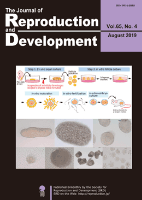
JOURNAL OF REPRODUCTION AND DEVELOPMENT
Integrating knowledge for a sustainable future.JOURNAL OF REPRODUCTION AND DEVELOPMENT, published by the SOCIETY REPRODUCTION & DEVELOPMENT-SRD in Japan, is a leading peer-reviewed journal dedicated to advancing the field of reproduction and development in animal sciences. With a notable impact factor reflected in its prestigious Q1 Quartile ranking in Animal Science and Zoology, the journal aims to disseminate cutting-edge research that explores the complexities of reproductive biology, developmental processes, and their implications for agriculture and biodiversity. This journal invites contributions that span multidisciplinary interests, thereby facilitating the integration of scientific knowledge and practical applications. Researchers, professionals, and students can benefit from the insights shared within its pages, as it strives to foster collaboration and innovation in the field. The journal’s comprehensive scope and esteemed reputation, underscored by its Scopus rank of #115 out of 490 in the category, make it an invaluable resource for anyone invested in the study of reproduction and development.

MARINE AND FRESHWATER BEHAVIOUR AND PHYSIOLOGY
Unveiling the Secrets of Marine and Freshwater PhysiologyMARINE AND FRESHWATER BEHAVIOUR AND PHYSIOLOGY, published by Taylor & Francis Ltd, is a renowned academic journal dedicated to advancing the understanding of the behavioral and physiological aspects of aquatic organisms. Established in 1994, the journal serves as a pivotal platform for researchers and professionals in the fields of Aquatic Science and Oceanography, offering valuable insights into the interactions between aquatic species and their environments. With an impact factor reflecting its significance in the academic community, it occupies a notable position in Category Quartiles, currently ranking Q3 in both Aquatic Science and Oceanography. Researchers are encouraged to explore a wide range of topics reflecting the complexity and diversity of marine and freshwater ecosystems. Although the journal is not open access, its contributions continue to influence both current research and future investigations, making it an essential resource for anyone engaged in the study of aquatic life.
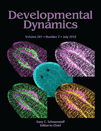
DEVELOPMENTAL DYNAMICS
Innovating Research in Cellular DynamicsDEVELOPMENTAL DYNAMICS is a prominent journal in the field of Developmental Biology, published by WILEY. This esteemed journal, identifiable by its ISSN 1058-8388 and E-ISSN 1097-0177, provides a critical platform for the dissemination of innovative research covering cellular and developmental processes across diverse biological systems. With a 2023 impact factor placing it in the Q2 category of Developmental Biology and an impressive Scopus rank of #39/82, the journal plays a vital role in advancing knowledge and fostering collaboration among researchers, professionals, and students. Although it is not an open-access publication, DEVELOPMENTAL DYNAMICS remains a cornerstone in the academic community, particularly for those dedicated to understanding the complexities of biological development. The journal's convergence from 1992 to 2024 reflects its longstanding commitment to high-impact research that influences both theoretical and practical applications in the field.
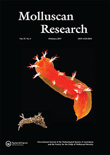
MOLLUSCAN RESEARCH
Dedicated to the Study of Molluscan LifeMolluscan Research is a distinguished journal dedicated to advancing the field of molluscan science, covering a broad spectrum of topics including taxonomy, ecology, evolutionary biology, and conservation. Published by Taylor & Francis Ltd, this journal has been a crucial resource for researchers from its inception in 1987 up to 2024, significantly contributing to the understanding of molluscan species and their roles in various ecosystems. With an impressive impact factor and recognized within the Q3 quartile rankings in Animal Science and Zoology and Ecology, Evolution, Behavior and Systematics, as well as Q4 in Genetics, Molluscan Research serves as a vital platform for dissemination of high-quality original research and reviews. While it does not currently offer Open Access options, the journal remains accessible through institutional subscriptions, fostering collaboration and knowledge-sharing among researchers, professionals, and students across the globe.
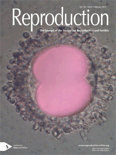
REPRODUCTION
Exploring the frontiers of reproductive science.REPRODUCTION, published by BIOSCIENTIFICA LTD, stands at the forefront of research in the fields of reproductive and developmental biology. With a focus on advancing our understanding of reproductive health and mechanisms, the journal has garnered an impressive reputation, consistently ranking in the first quartile for key categories including Embryology, Endocrinology, Obstetrics and Gynecology, and Reproductive Medicine in 2023. Notably, it holds an esteemed position in the Scopus rankings, with high percentiles that reflect its significant impact in the scientific community. The journal is committed to open access, promoting the broad dissemination of high-quality research to facilitate innovative discoveries and interdisciplinary collaboration. Situated in the United Kingdom, REPRODUCTION serves as a vital resource for researchers, professionals, and students eager to contribute to the evolving landscape of reproductive sciences and related fields.

MOLECULAR REPRODUCTION AND DEVELOPMENT
Innovating methodologies to illuminate molecular mechanisms.MOLECULAR REPRODUCTION AND DEVELOPMENT is a prestigious peer-reviewed journal published by WILEY, specializing in the intricate domains of Cell Biology, Developmental Biology, and Genetics. Since its inception in 1988, this journal has been a vital platform for disseminating pioneering research and innovative methodologies that advance our understanding of molecular mechanisms driving reproduction and development. With a current impact factor reflective of its significance in the field, MOLECULAR REPRODUCTION AND DEVELOPMENT is ranked Q3 in both Cell Biology and Developmental Biology, and Q2 in Genetics, underscoring its relevance and scholarly contribution. Catering to a diverse audience of researchers, professionals, and students, this journal not only showcases cutting-edge findings but also aims to foster interdisciplinary exchanges that enhance scientific collaboration. By exploring critical biological processes, it ultimately contributes to the broader understanding of health and disease in various organisms, making it an essential resource for anyone dedicated to the life sciences.

ARTHROPOD STRUCTURE & DEVELOPMENT
Connecting Ecology and Arthropod ScienceARTHROPOD STRUCTURE & DEVELOPMENT, published by Elsevier Science Ltd, is a leading journal dedicated to the intricate study of arthropod morphology, physiology, and developmental biology. With an ISSN of 1467-8039 and an E-ISSN of 1873-5495, this journal plays a critical role in advancing our understanding of insect science as demonstrated by its impressive Q1 ranking in this category. It occupies a respected position within the academic landscape, being ranked Q3 in Developmental Biology and Q2 in both Ecology, Evolution, Behavior and Systematics, and Medicine (miscellaneous), illustrating its interdisciplinary appeal. Covering research from 2000 to 2024, ARTHROPOD STRUCTURE & DEVELOPMENT offers a robust platform for researchers who are keen to unlock the complexities of arthropod life, contributing significantly to the fields of entomology and ecological research. Open access options ensure that groundbreaking discoveries are readily available to a global audience, fostering collaboration and innovation. As a vital resource for students, professionals, and academics, this journal is indispensable for those dedicated to exploring the fascinating world of arthropods.